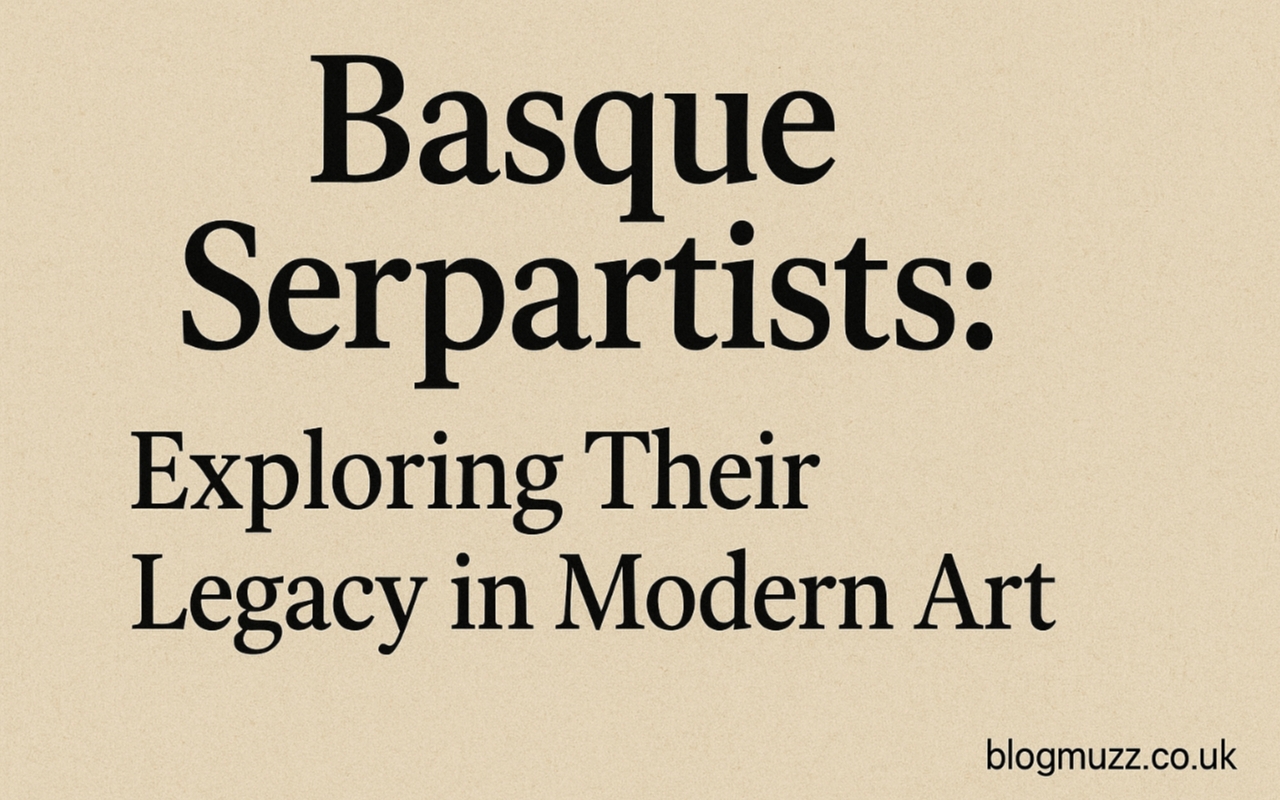Introduction to basqueserpartists
Art has always been one of the strongest reflections of culture, history, and identity. When we talk about basqueserpartists, we enter a fascinating space where regional heritage, personal storytelling, and modern artistic innovation converge. The Basque region, known for its rich traditions and independent spirit, has produced many artists who fall under the umbrella of “basqueserpartists.” These creators are not simply painters or sculptors; they represent a broader cultural phenomenon that blends historical memory with contemporary experimentation. Their legacy is rooted in resilience, adaptation, and an unyielding drive to showcase their perspectives on the world. To understand basqueserpartists, we need to go beyond a surface-level appreciation of art and dive into the historical, social, and philosophical forces that shaped their creative journeys.
The Historical Background of basqueserpartists
The origins of basqueserpartists can be traced back to centuries of cultural resilience in the Basque Country, a unique region that straddles northern Spain and southwestern France. Throughout history, the Basques have fought to preserve their language, customs, and traditions despite political pressure, wars, and modernization. Art naturally became one of the strongest outlets for self-expression and cultural survival. Early basqueserpartists often drew inspiration from their rural surroundings, mythology, and religious practices. However, with the rise of industrialization and urban development, their themes began to expand, incorporating social commentary and political symbolism. By the twentieth century, basqueserpartists were not only celebrated locally but also began making an impact on international art circles, bringing attention to their distinct visual languages.
The Identity and Philosophy Behind basqueserpartists
What makes basqueserpartists so unique is not just their geographic background but also their philosophy of art. For many of these artists, creativity is not a detached practice but deeply tied to identity, memory, and belonging. They often explore questions such as: What does it mean to be Basque in a globalized world? How can tradition coexist with modernity? Their works frequently incorporate symbolic motifs such as landscapes, abstract representations of folklore, or visual depictions of historical struggles. By doing so, basqueserpartists present art as a tool for cultural preservation and global dialogue. The philosophy guiding them is clear: art should not only be beautiful but also meaningful, socially aware, and rooted in lived experience.
Major Themes in basqueserpartists’ Work
One of the defining features of basqueserpartists is the recurring set of themes they explore. Nature is perhaps the most dominant, with many works emphasizing the rugged mountains, coastlines, and rural life that define the Basque landscape. Another strong theme is resistance, reflecting centuries of cultural and political challenges faced by the Basque people. Identity and memory also appear prominently, often expressed through abstract symbolism or experimental forms. Many basqueserpartists use their art to question modernity, globalization, and consumer culture, offering alternative ways of seeing the world that are grounded in cultural roots. These themes give their work a timeless quality, resonating with both local audiences and international observers who find universal meaning in their deeply personal expressions.
Influential Figures Among basqueserpartists
The movement of basqueserpartists cannot be fully understood without acknowledging the individuals who shaped it. Some artists gained recognition for their bold experimentation with form and color, while others became known for their deeply political works. For example, certain painters introduced abstract styles that challenged conventional representations of Basque identity, while sculptors created monumental works symbolizing resilience and endurance. Over time, these influential figures established a reputation for the Basque artistic community as a whole, proving that local creativity could compete with and even influence international art movements. Their contributions laid the foundation for younger generations of basqueserpartists who continue to innovate while staying connected to their heritage.
The Global Recognition of basqueserpartists
In the latter half of the twentieth century, basqueserpartists began gaining attention beyond their homeland. Exhibitions in Paris, New York, and other cultural capitals allowed international audiences to witness the originality of Basque art. Critics praised the balance between modernist experimentation and cultural rootedness, noting that basqueserpartists managed to preserve their uniqueness while engaging with global artistic trends. Today, many museums, galleries, and academic institutions feature the works of basqueserpartists, solidifying their place in the canon of modern art. This recognition not only honors their creative achievements but also validates the broader cultural struggles and triumphs of the Basque people.
The Role of basqueserpartists in Cultural Preservation
Beyond aesthetics, basqueserpartists have played a crucial role in preserving Basque culture. At times when language, traditions, and identity were under threat, art became a safe yet powerful means of expression. Through paintings, sculptures, murals, and installations, artists embedded cultural symbols and narratives that ensured their survival for future generations. For example, many works use Basque mythology or folklore as central elements, while others visually document historical events. In this sense, basqueserpartists are not only creators but also cultural guardians, bridging the gap between past and present, tradition and modernity. Their works serve as living archives, carrying forward the values and stories of their community in ways that textbooks or political speeches often cannot.
The Contemporary Evolution of basqueserpartists
While the early generations of basqueserpartists were strongly tied to tradition and cultural survival, contemporary artists are pushing boundaries in new directions. Digital media, performance art, and global collaborations have expanded the scope of Basque creativity. Yet, even within these modern forms, the essence of basqueserpartists remains intact—an emphasis on identity, resilience, and dialogue. Today’s artists often tackle global issues such as climate change, migration, and inequality while still weaving in local cultural motifs. This evolution demonstrates the adaptability and relevance of basqueserpartists in the twenty-first century, ensuring that their legacy continues to inspire both regional and global audiences.
Challenges and Criticisms Faced by basqueserpartists
Despite their successes, basqueserpartists have also faced challenges. Some critics argue that their work is too heavily focused on regional identity, limiting its universal appeal. Others suggest that the label itself can pigeonhole artists, reducing their recognition to cultural heritage rather than pure artistic merit. Additionally, like many artists worldwide, basqueserpartists must navigate the economic difficulties of sustaining a career in art, especially when competing with globalized markets dominated by mainstream trends. However, these challenges have also pushed them to innovate, experiment, and diversify their approaches, making their contributions even more dynamic and resilient.
The Enduring Legacy of basqueserpartists in Modern Art
Ultimately, the legacy of basqueserpartists lies in their ability to transform local experiences into universal artistic expressions. They have shown the world that cultural identity and modern art are not mutually exclusive but can coexist in powerful, innovative ways. Their works stand as testaments to the resilience of the Basque spirit and its ongoing dialogue with the rest of the world. By bridging past and present, tradition and modernity, basqueserpartists have carved out a unique space in modern art history—one that continues to inspire future generations of artists, scholars, and audiences who value both creativity and cultural authenticity.
Conclusion
The journey of basqueserpartists is more than an exploration of art—it is a story of resilience, cultural pride, and global influence. From their historical roots in the Basque Country to their recognition on the international stage, these artists have shown that creativity is a powerful medium for preserving identity while engaging in meaningful dialogue with the wider world. Their work challenges the boundaries of tradition and modernity, proving that heritage can inspire innovation rather than limit it. As contemporary basqueserpartists continue to evolve through digital media, performance, and global collaborations, their legacy remains deeply tied to the values of authenticity, community, and expression. Ultimately, the enduring significance of basqueserpartists lies in their ability to remind us that art is not just about aesthetics but also about the stories, struggles, and triumphs that define human experience.



